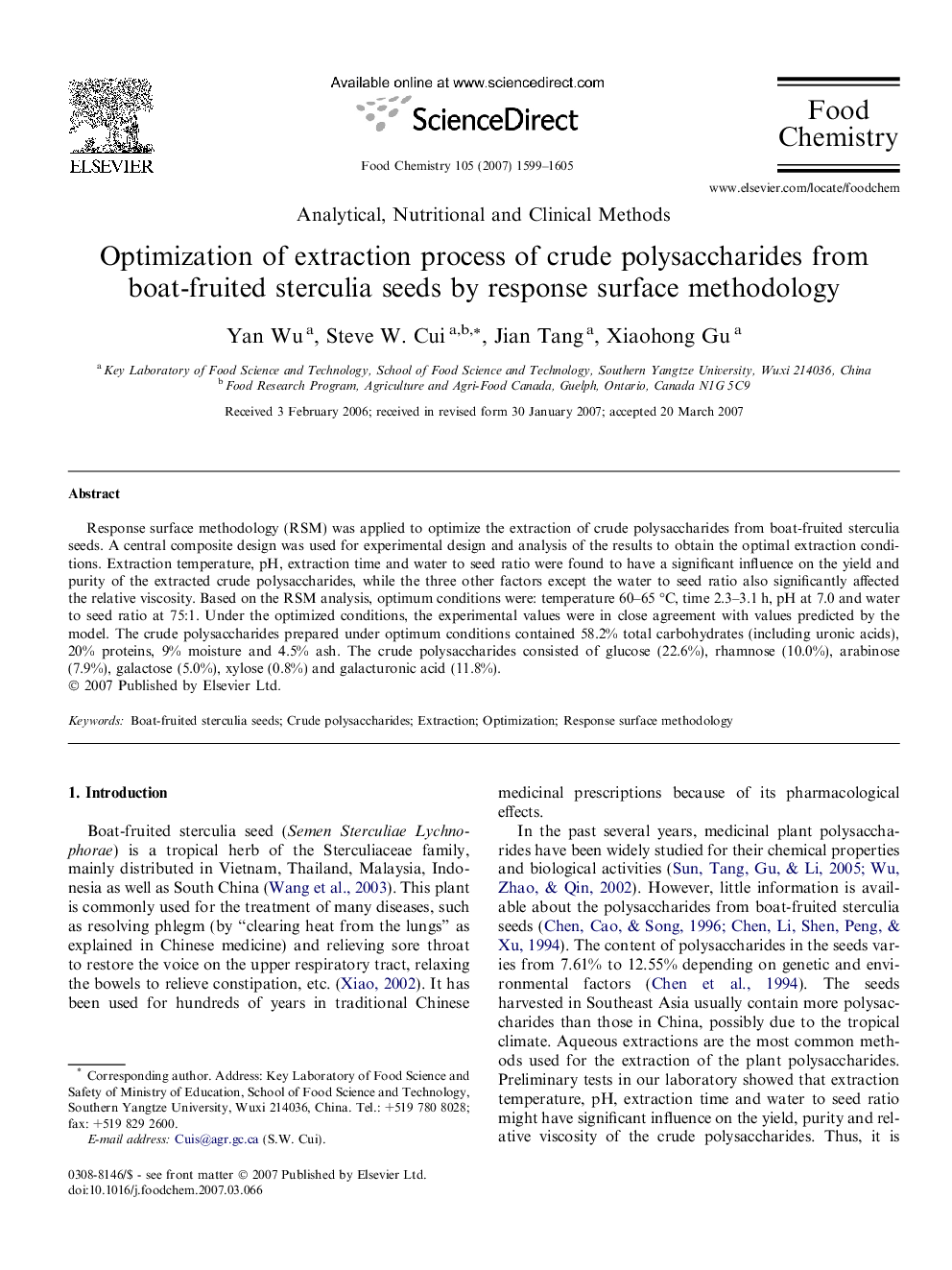| Article ID | Journal | Published Year | Pages | File Type |
|---|---|---|---|---|
| 1189332 | Food Chemistry | 2007 | 7 Pages |
Response surface methodology (RSM) was applied to optimize the extraction of crude polysaccharides from boat-fruited sterculia seeds. A central composite design was used for experimental design and analysis of the results to obtain the optimal extraction conditions. Extraction temperature, pH, extraction time and water to seed ratio were found to have a significant influence on the yield and purity of the extracted crude polysaccharides, while the three other factors except the water to seed ratio also significantly affected the relative viscosity. Based on the RSM analysis, optimum conditions were: temperature 60–65 °C, time 2.3–3.1 h, pH at 7.0 and water to seed ratio at 75:1. Under the optimized conditions, the experimental values were in close agreement with values predicted by the model. The crude polysaccharides prepared under optimum conditions contained 58.2% total carbohydrates (including uronic acids), 20% proteins, 9% moisture and 4.5% ash. The crude polysaccharides consisted of glucose (22.6%), rhamnose (10.0%), arabinose (7.9%), galactose (5.0%), xylose (0.8%) and galacturonic acid (11.8%).
